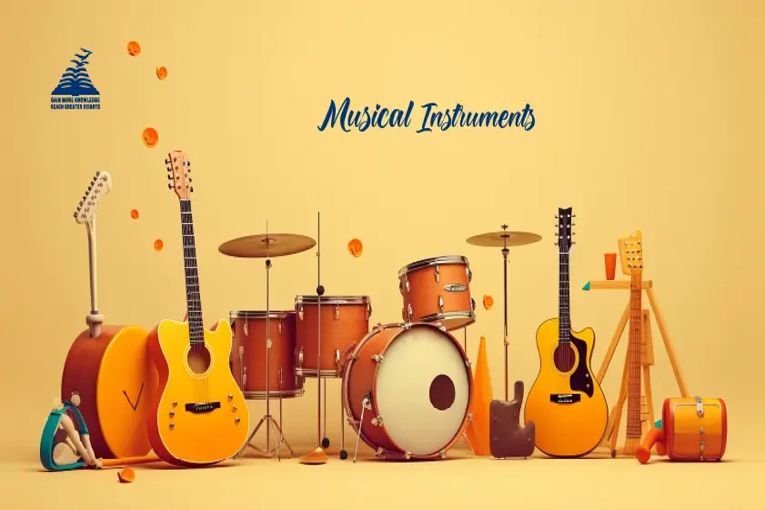Introduction
Music is a universal language that can bring joy and enrichment to children’s lives. Learning to play a musical instrument not only provides a creative outlet but also offers numerous cognitive and developmental benefits. When it comes to choosing the best music instruments for children to learn, several factors should be considered, including the child’s age, interests, and physical capabilities. In this article, we will explore some of the top music instruments that are well-suited for children to learn and enjoy.
Piano
The piano is often considered one of the best instruments for children to learn due to its versatility and foundational role in music education. Learning to play the piano helps children develop essential musical skills such as hand-eye coordination, rhythm, and note reading. The piano also provides a solid foundation for understanding music theory, which can be beneficial if a child decides to learn other instruments in the future. Additionally, the piano offers a wide range of musical styles that children can explore, from classical to pop to jazz.
One of the advantages of learning the piano is that it allows children to see immediate results for their efforts. As they press a key, they hear a sound, which can be very rewarding and motivating. Moreover, playing the piano can help children improve their concentration and discipline as they practice and strive to master new pieces.
Violin
The violin is another popular choice for children who are interested in learning a string instrument. The violin is known for its beautiful sound and expressive capabilities, making it a rewarding instrument to master. Learning the violin helps children develop a keen sense of pitch, as well as improve their listening skills and ear training. Playing the violin also requires good posture and fine motor skills, which can benefit a child’s physical development.
Learning the violin can be challenging, especially in the beginning stages, as children need to develop the coordination to hold the instrument correctly and use the bow to produce clear, resonant tones. However, with practice and dedication, children can experience the satisfaction of creating music with this elegant instrument.
Guitar
The guitar is a versatile instrument that appeals to many children due to its popularity in various music genres, from rock and pop to folk and blues. Learning to play the guitar can be a fun and engaging experience for children, as they can start strumming simple chords and playing their favorite songs relatively quickly. The guitar is also a portable instrument, allowing children to practice and play music wherever they go.
Playing the guitar helps children develop finger dexterity and coordination, as they learn to fret chords and pluck strings. The guitar is also a social instrument, making it easy for children to jam with friends or participate in group music activities. Learning the guitar can ignite a child’s passion for music and inspire creativity in composing their melodies and songs.
Drums
For children with a lot of energy and a love for rhythm, learning to play the drums can be an excellent choice. Playing the drums allows children to express themselves through percussive beats and rhythms, fostering creativity and coordination. Drumming also helps children improve their timing and sense of rhythm, skills that are essential for musicians of all levels.
The drums are a dynamic instrument that can be played in various styles, from rock and jazz to Latin and world music. Learning to play the drums can be a great way for children to release stress and pent-up energy while developing their musical abilities. Drumming also enhances physical coordination and motor skills, making it a well-rounded instrument for children to learn.
Flute
The flute is a beautiful and delicate instrument that can captivate children with its sweet, airy sound. Learning to play the flute requires proper breath control and embouchure, which can help children improve their lung capacity and respiratory health. Playing the flute also enhances children’s listening skills and musical sensitivity, as they learn to adjust their tone and phrasing to create expressive melodies.
The flute is a versatile instrument that can be played in solo performances, ensembles, or even orchestras. Children who learn to play the flute can experience the joy of playing melodic lines and harmonizing with other instruments. The flute’s portability and relatively simple fingering make it an accessible instrument for children to start their musical journey.
Ukulele
The ukulele is a fun and easy-to-learn instrument that is perfect for young children who want to start playing music. The ukulele’s small size and nylon strings make it comfortable for children to hold and play, while its simple chord shapes allow beginners to strum along to their favorite songs in no time. Learning the ukulele can be a great way for children to develop their musical ear and rhythm skills in a relaxed and enjoyable setting.
Playing the ukulele can also boost children’s confidence and creativity, as they experiment with different strumming patterns and chord progressions. The ukulele’s cheerful sound and portable nature make it a popular choice for children who want to bring music into their daily lives. Learning the ukulele can lay the foundation for exploring other string instruments in the future.







